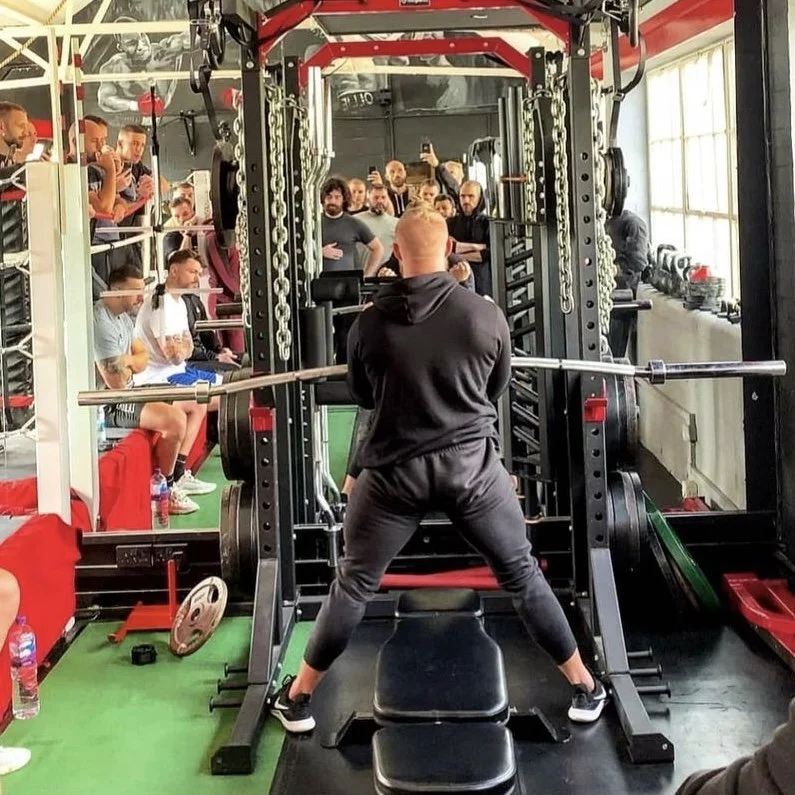3 Things I have learned from Phil Daru
Many people played a significant role in shaping me as a coach, and Phil Daru is undoubtedly one of them. Phil is known as one of the best combat sports strength and conditioning coaches, working with athletes in MMA, judo, and boxing. Among his clients are UFC champions Dustin Poirier, Joanna Jedrzejczyk, and Jr. Dos Santos. In 2019, I traveled to a small boxing club on the outskirts of London for one of Phil's first public seminars, long before he became famous online. It was one of my first international seminars and remains one of the most influential to this day. Here are the top three lessons I've learned.
1) If you want to be a good coach, it's essential to understand what your clients go through
One of the key takeaways from Phil Daru is the importance of empathy in coaching. Understanding what your clients, especially athletes, go through is crucial for effective coaching. Imagine planning a workout for a boxer who just had a tough sparring session. If you've never boxed and don't know how exhausting a sparring session can be, it can be tricky. Similarly, prescribing a training plan you have never done. Many ideas look great on paper but are absolute nonsense when put into practice. Don't recommend anything you haven't tested yourself first. For those coaching athletes, try to grasp what your clients experience. If you work with fighters, at least give a bag or pad workout a shot now and then. Understanding their training is key. Never suggest a training routine you haven't tested personally.
2) The correct way to box squat
Throughout my time in the gym, I've never witnessed anyone executing the box squat correctly, which is a shame as it stands out as one of the most effective exercises for developing strength and power in the lower body. The box squat was heavily popularized by Louie Simmons, the founder of Westside Barbell. Louie, a competitive powerlifter for over five decades, achieved impressive strength feats, including a 420kg squat, 270kg bench press, and a 327 deadlift. He incorporated various training principles from the Soviet weightlifting system and the Culver City Westside Barbell club, one of which was the box squat.
Contrary to common belief, the proper box squat is not primarily a quadriceps-focused movement but rather a hip extension exercise, engaging muscles like the hamstrings, adductors, and glutes. These muscles are often the weak links among athletes, not only fighters. Executing a box squat correctly involves sitting as far back as possible, and fully stretching the mentioned muscles, which act like a spring during the return to the top position. It's essential to maintain a wide stance, with your shins staying vertical throughout the whole movement.
3) Condensed conjugate model
The Westside Barbell training system stands out as one of the greatest and most versatile training systems applicable to athletes of all kinds. However, its complexity often leads to misunderstandings and incorrect implementations. Phil is one of the best in the entire world at using principles from Westside Barbell. Phil uses a condensed conjugate model, which means his athletes engage in both maximal effort and dynamic effort during a single training session. This approach maximizes training efficiency by concurrently developing the two critical strength qualities, as most of the fighters can’t allow more than 2 strength sessions per week.
Here's a sample training routine using a condensed conjugate model
Block A - Warm-up, the more general the requirements, the more general the warm-up.
Athletic warm-up, Controlled articular rotations (CARs), dynamic stretching, proprioception, and reactive drills
Block B - Dynamic effort (Lower body)
5X3 Reactive plyometrics
8X2 Speed deadlifts with chains using 85% 1RM
Block C - Maximal effort (Upper body)
Build up to the top set of 3 repetitions on close grip floor press
Block D - Repetitive method - The last part of the training is dedicated to hypertrophy and high repetition work with a focus on weak links and posterior chain.
5X3 neutral grip chin-ups
12,10,8,6 Romanian deadlift
3X15-20 Reverse hyperextension





